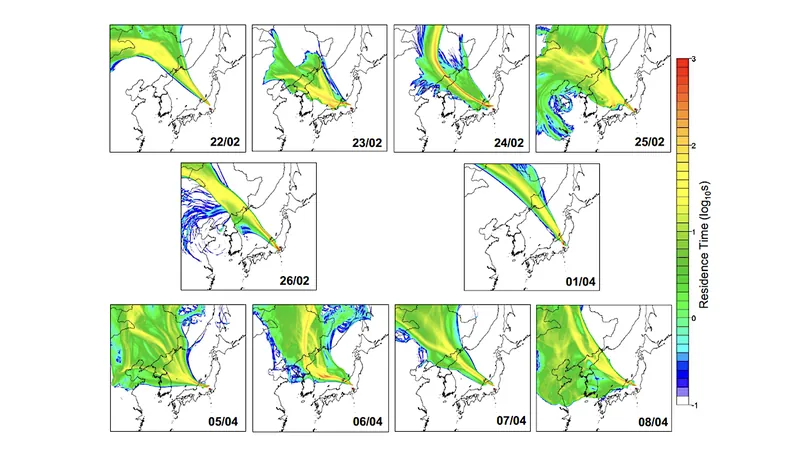
Shocking Discovery: Microorganisms May Travel Thousands of Kilometers in Earth's Atmosphere!
2024-09-17
A Groundbreaking Study
A groundbreaking study has unveiled an astonishing fact: viable bacteria and fungi can travel vast distances in the Earth's troposphere, reaching altitudes of up to 3,000 meters! Researchers from the Barcelona Institute for Global Health (ISGlobal), alongside the Daniel Bravo Andreu Private Foundation, conducted a series of air sample analyses around Japan that revealed microorganisms originating from over 2,000 kilometers away—areas laden with fertilizers and pesticides.
Previously, scientists understood that certain materials could be blown long distances in the atmosphere above the planetary boundary layer due to lower friction, but the survival of microorganisms at such high altitudes was largely unrecognized. "Our findings are game-changing," states Xavier Rodo, ICREA researcher at ISGlobal. "We never anticipated that viable microorganisms could be found at such heights."
How They Did It: A Journey Through the Skies of Japan
Equipped with a Cessna aircraft, Rodo and an international team embarked on ten airborne surveys over Japan, strategically following wind currents that transported air from mainland Asia into the region. Starting from Tokyo’s Chofu airport, they collected air samples from altitudes ranging from 1,000 to 3,000 meters, in addition to ground samples for comparison. In total, the team analyzed 22 aerosol filter samples across two different months, February and April 2014.
The results were mind-boggling—DNA sequencing identified over 266 fungal and 305 bacterial genera present in the collected aerosols. Alarmingly, some of these microorganisms are associated with various human, animal, and plant diseases, including notorious species like Escherichia coli and Clostridium botulinum. The study highlights the potential health risks posed by these airborne pathogens, particularly to vulnerable individuals.
Antimicrobial Resistance: A Growing Concern
One of the study's chilling revelations was the identification of drug-resistant bacteria in the air samples. Notably, a strain of Micrococcus luteus demonstrated resistance to multiple antibiotic classes, underscoring how such resistance could conceivably spread across great distances. “This could signal a new front in the battle against antimicrobial resistance,” warns Sofya Podzniakova, one of the lead authors.
The presence of certain elements like zinc sulfate and potassium in the samples indicates an agricultural source for the microbes, tracing back to the intensively farmed croplands in northeast China. The research further confirms that the microbial diversity observed in airborne samples closely mirrored that found on the ground, implying a direct downward transport of these microorganisms.
Implications for Public Health
This study opens up a new area of research in understanding how airborne microorganisms can impact human health. While a direct link between the pathogens found in aerosols and health outcomes has yet to be established, the implications are clear. As our environment becomes increasingly interconnected, the potential for long-distance disease transmission via the air we breathe is a significant concern for public health officials worldwide.
"This research reveals an unprecedented diversity of microorganisms carried by wind currents over extensive distances. Our understanding of how airborne pathogens affect human health is undergoing a paradigm shift," Rodo concludes confidently.
As scientists continue to investigate the implications of these findings, the conversation around air quality, environmental health, and disease becomes ever more critical. Stay tuned for updates on this fascinating intersection of microbiology and public health that could change how we view airborne pathogens forever!





 Brasil (PT)
Brasil (PT)
 Canada (EN)
Canada (EN)
 Chile (ES)
Chile (ES)
 España (ES)
España (ES)
 France (FR)
France (FR)
 Hong Kong (EN)
Hong Kong (EN)
 Italia (IT)
Italia (IT)
 日本 (JA)
日本 (JA)
 Magyarország (HU)
Magyarország (HU)
 Norge (NO)
Norge (NO)
 Polska (PL)
Polska (PL)
 Schweiz (DE)
Schweiz (DE)
 Singapore (EN)
Singapore (EN)
 Sverige (SV)
Sverige (SV)
 Suomi (FI)
Suomi (FI)
 Türkiye (TR)
Türkiye (TR)